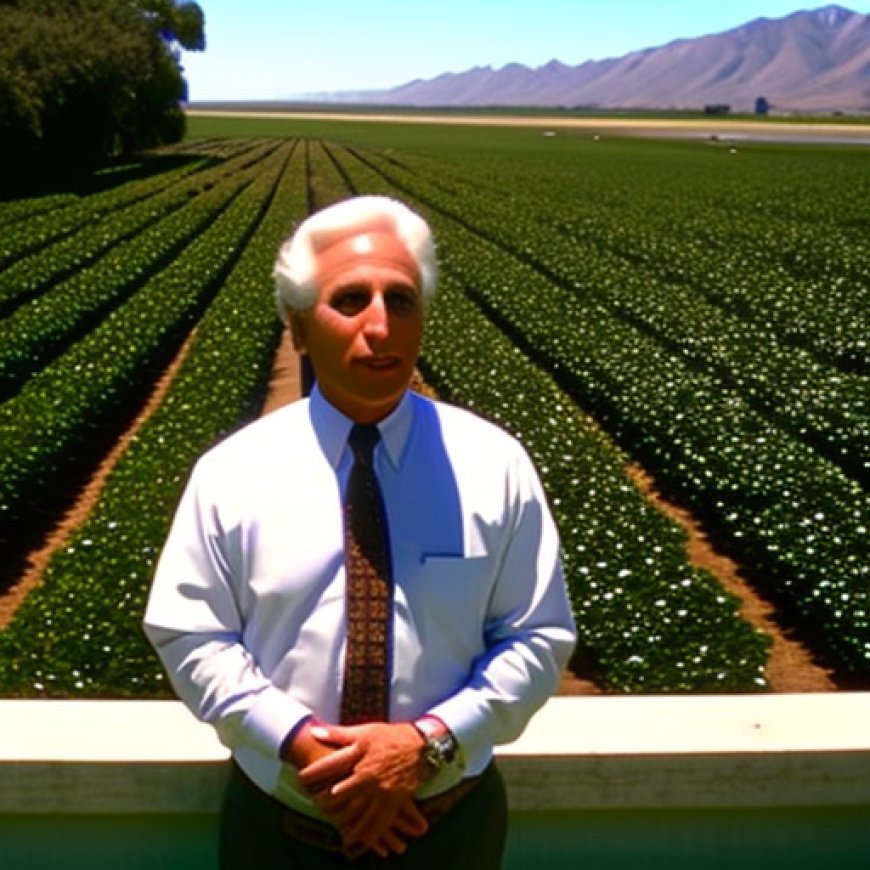California Central Valley Congressman Jim Costa Leads Legislation to Expand Access to Agriculture Conservation Programs
California Central Valley Congressman Jim Costa Leads Legislation ... Sierra Sun Times


July 21, 2023 – WASHINGTON – Congressman Jim Costa (CA-21) introduces the Growing Access to Environmental Sustainability (GATES) Act
Congressman Jim Costa (CA-21) joined Rep. Jimmy Panetta (CA-19) and a bipartisan coalition in introducing the Growing Access to Environmental Sustainability (GATES) Act to reduce barriers that producers face in accessing agricultural conservation programs.
Climate Change and Agricultural Productivity
Climate change is making it more difficult to farm and put food on America’s table. We need to ensure agricultural producers have access to conservation programs to improve agricultural productivity. Congressman Costa stated, “I’m proud to co-lead this bill to support producers in sustainable resource management while improving operations on their farms.”
Expanding Reach and Effectiveness of Conservation Programs
Agricultural producers are on the frontlines of our conservation efforts, yet too often are unable to access federal programs designed to assist their work as good stewards of our environment. Rep. Panetta said, “I’m proud to author and introduce this bipartisan legislation that would waive certain limitations to expand the reach and effectiveness of these agriculture conservation programs. By empowering our farmers with the conservation support they need, we can better safeguard the bounty that they help provide our country.”
Equitable Access to Conservation Funding
Current adjusted gross income (AGI) limitations disproportionately limit those producers with high input costs from participating in certain USDA conservation-focused programs. These limitations have not kept pace with inflation. These barriers reduce the overall impact of federal efforts to conserve our environment and empower farmers to mitigate the impact of climate change.
The GATES Act
The GATES Act would exempt the AGI limitation for farms that get 75% of their income from farming or related farming practices. This would apply to the following conservation programs:
- Conservation Reserve Program (CRP)
- Environmental Quality Incentives Program (EQIP)
- Conservation Stewardship Program (CSP)
The bill is cosponsored by Reps. John Duarte (CA-13), Yadira Caraveo (CO-08), David Rouzer (NC-07), Jim Costa (CA-21), Chuck Edwards (NC-11), and Lori Michelle Chavez-DeRemer (OR-5).
The bill is endorsed by the Specialty Crop Farm Bill Alliance, Western Growers, and California Farm Bureau.
Source: Congressman Jim Costa
SDGs, Targets, and Indicators Analysis
1. Which SDGs are addressed or connected to the issues highlighted in the article?
- SDG 2: Zero Hunger – The article discusses the importance of ensuring agricultural producers have access to conservation programs to improve agricultural productivity and put food on America’s table.
- SDG 13: Climate Action – The article highlights the impact of climate change on farming and the need to empower farmers to mitigate its effects through sustainable resource management.
- SDG 15: Life on Land – The article emphasizes the role of agricultural producers as good stewards of the environment and the need to expand the reach and effectiveness of agriculture conservation programs.
2. What specific targets under those SDGs can be identified based on the article’s content?
- Target 2.4: By 2030, ensure sustainable food production systems and implement resilient agricultural practices that increase productivity and production, that help maintain ecosystems, that strengthen capacity for adaptation to climate change, extreme weather, drought, flooding, and other disasters, and that progressively improve land and soil quality.
- Target 13.2: Integrate climate change measures into national policies, strategies, and planning.
- Target 15.9: By 2020, integrate ecosystem and biodiversity values into national and local planning, development processes, poverty reduction strategies, and accounts.
3. Are there any indicators mentioned or implied in the article that can be used to measure progress towards the identified targets?
- Indicator 2.4.1: Proportion of agricultural area under productive and sustainable agriculture.
- Indicator 13.2.1: Number of countries that have integrated mitigation, adaptation, impact reduction, and early warning measures into their national policies, strategies, and planning.
- Indicator 15.9.1: Progress towards national targets established in accordance with Aichi Biodiversity Target 2 of the Strategic Plan for Biodiversity 2011-2020.
SDGs, Targets, and Indicators Table
| SDGs | Targets | Indicators |
|---|---|---|
| SDG 2: Zero Hunger | Target 2.4: By 2030, ensure sustainable food production systems and implement resilient agricultural practices that increase productivity and production, that help maintain ecosystems, that strengthen capacity for adaptation to climate change, extreme weather, drought, flooding, and other disasters, and that progressively improve land and soil quality. | Indicator 2.4.1: Proportion of agricultural area under productive and sustainable agriculture. |
| SDG 13: Climate Action | Target 13.2: Integrate climate change measures into national policies, strategies, and planning. | Indicator 13.2.1: Number of countries that have integrated mitigation, adaptation, impact reduction, and early warning measures into their national policies, strategies, and planning. |
| SDG 15: Life on Land | Target 15.9: By 2020, integrate ecosystem and biodiversity values into national and local planning, development processes, poverty reduction strategies, and accounts. | Indicator 15.9.1: Progress towards national targets established in accordance with Aichi Biodiversity Target 2 of the Strategic Plan for Biodiversity 2011-2020. |
Behold! This splendid article springs forth from the wellspring of knowledge, shaped by a wondrous proprietary AI technology that delved into a vast ocean of data, illuminating the path towards the Sustainable Development Goals. Remember that all rights are reserved by SDG Investors LLC, empowering us to champion progress together.
Source: goldrushcam.com

Join us, as fellow seekers of change, on a transformative journey at https://sdgtalks.ai/welcome, where you can become a member and actively contribute to shaping a brighter future.







